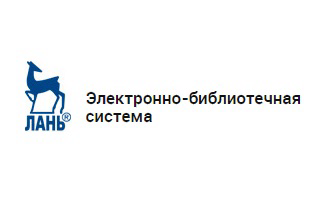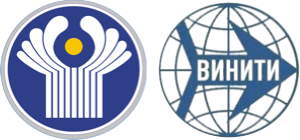| УДК 911.9 | DOI: 10.21440/0536-1028-2020-7-92-102 | Download |
Introduction. The article evaluates the results of modern implementation of environmental and climate management systems in a gold mining organization. A SWOT analysis was carried out and recommendations were developed for adjusting and clarifying the content of the main management areas. As an information base, only public information resources and information provided by the organization in the course of interaction during educational program implementation were used Research aim is to assess the implementation of environmental and climate management systems in the Ural gold mining industry.
Methodology. The paper analyzes and evaluates environmental and climate management systems based on the use of SWOT analysis tools and geographic assessment of spatial and temporal changes. The spatial risks of safe ecological development of the organization are systematized, taking into account the immediate geographical environment.
Results. A set of measures has been developed to correct and change the main management decisions of the environmental and climate management systems of the Ural gold mining organization.
Conclusions. A satisfactory cumulative assessment of the results of environmental and climate management systems implementation in the organization is given; a set of measures has been developed that, in general, can be used in the regional industry; critical conceptual comments were formulated on the content of the current management KPIs.
Key words: environmental management system; climate management system; Vorontsovskoye field.
REFERENCES
1. Zbarskaia D. G. Analysis of the sources of demand in the gold market. Sovremennye nauchnye issledovaniia i razrabotki = Modern research and development. 2018; 2 (11): 271–273. (In Russ.)
2. Zaerniuk V. M. About some problems of development of the gold mining industry of Russia. Vestnik Rossiiskogo khimiko-tekhnologicheskogo universiteta imeni D. I. Mendeleeva: gumanitarnye i sotsialno ekonomicheskie issledovaniia = Bulletin of D. Mendeleev University of Chemical Technology of Russia: Humanitarian and Social-Economic Studies. 2018; 2 (IX): 43–50. (In Russ.)
3. Niiazbekova Sh. U., Bunevich K. G. The world gold market: features, production, prospects. Nauchnyi vestnik: finansy, banki, investitsii = Scientific Bulletin: Finance, Banking, Investment. 2017; 4: 50–55. (In Russ.)
4. Balina T. A., Ponomareva Z. V. Social-economic district as an instrument of studying territorial community of people. Sovremennoe obshchestvo: voprosy teorii, metodologii, metody sotsialnykh issledovanii = Modern Society: Questions of Theory, Methodology, Methods of Social Research. 2018; 1: 23–29. (In Russ.)
5. Efimova N. I. The present of the Khanty people. Topical modern problems. Moia professionalnaia kariera = My Professional Career. 2020; 2 (9): 7–16. (In Russ.)
6. Petrova R. I. Politicization of urban conflicts in modern Russia: participants, agenda, tactical interaction. Vestnik Permskogo universiteta. Politologiia = Bulletin of Perm University. Political science. 2017; 3: 122–136. (In Russ.)
7. Shcherbakov G. A. Climate change and vectors of development of the North of Russia in the 21st century. In: Water resources – the basis for sustainable development of settlements in Siberia and the Arctic in the XXI century. Tyumen: Publishing house TIU; 2019. p. 527–533. (In Russ.)
8. Eremin S. A., Mamontov Iu. I. Environmental problems of the Kurgan region. In: Water resources – the basis for sustainable development of settlements in Siberia and the Arctic in the XXI century. Tyumen: TIU Publishing House; 2019. p. 352–357. (In Russ.)
9. Shamatonova G. L., Maiorov V. O. Environmental protests as a form of manifestation of civil activity. Sotsialnye i gumanitarnye znaniia = Social and Humanitarian Knowledge. 2019; 5 (3): 200–207. (In Russ.)
10. Kozlov S. D. Gold as an effective tool for investing and protecting the savings of citizens, households and small businesses in an economic and socio-political crisis. Vestnik instituta mirovykh tsivilizatsii = Bulletin of the Institute of World Civilizations. 2020; 11 (2): 88–95. (In Russ.)
11. Tskhovrebov E. S. Resource-saving: main formation stages, theories and methods, tendencies and prospects of development in industry and construction of Russia. Vestnik MGSU. 2020; 15 (1): 112–158.
12. Elgizawy S. M., El-Haggar S. M., Nassar K. Slum Development Using Zero Waste Concepts: Construction Waste Case Study. Procedia Engineering. 2016; 145: 1306–1313. DOI: 10.1016/j.proeng.2016.04.168
13. Hart J., Adams K., Giesekam J., Tingley D.D., Pomponi F. Barriers and drivers in a circular economy: the case of the built environment. Procedia CIRP. 2019; 80: 619–624. DOI: 10.1016/j. procir.2018.12.015
14. Kurdve M. Digital assembly instruction system design with green lean perspective. Case study from building module industry. Procedia CIRP. 2017; 72: 762–767. DOI: 10.1016/j. procir.2018.03.118
15. Zhao Ya., Xiao G., Zhou Ji., Wu Ch. International comparison of the patterns in urban transition towards greening. Procedia Engineering. 2017; 198: 770–780. DOI: 10.1016/j.proeng.2017.07.128
16. Velichko E., Tskhovrebov E. Insights into the state of affairs and possible ways to improve secondary material waste management. MATEC Web of Conferences. 2018; 196: 04066. DOI: 10.1051/matecconf/201819604066
17. Buts U. Theory and methods of resource saving management in agricultural production. Saarbrеcken: LAP LAMBERT Academic Publishing; 2016. 201 p.
18. Lähde E., Di Marino M. Multidisciplinary collaboration and understanding of green infrastructure Results from the cities of Tampere, Vantaa and Jyväskylä (Finland). Urban Forestry & Urban Greening. 2019; 40: 63–72. DOI: 10.1016/j. ufug.2018.03.012
19. Goldstein B., Rasmussen F. LCA of Buildings and the Built Environment. Life Cycle Assessment. 2018. Pp. 695–722. DOI: 10.1007/978-3-319- 56475-3_28
20. Temirbulatov A. M. Methods for assessing environmental management at an industrial enterprise. Voprosy strukturizatsii ekonomiki = Questions of Economic Structuring. 2006; 4: 71–74. (In Russ.)
21. Minina O. V. Auerbach complex ore-magmatic system in the Middle Urals. Otechestvennaya geologiya = National Geology. 1994; 7: 17–23. (In Russ.)
22. Stepanov S. Iu., Palamarchuk R. S., Cherepanov A. V., Proskurnin V. F. Geological and genetic type of the Vorontsov gold deposit (Northern Urals). Uralskaia mineralogicheskaia shkola = Ural Mineralogical School. 2019; 25: 163–168.
23. Kasatkin A.V., Nestola F., Agakhanov A. A., Skoda R., Karpenko V. Yu., Tsyganko M. V., Plasil J. Vorontsovite, (Hg5Cu)Σ6TlAs4S12, and Ferrovorontsovite, (Fe5Cu)Σ6TlAs4S12: The Tl- and Tl-Fe-Analogues of Galkhaite from the Vorontsovskoe Gold Deposit, Northern Urals, Russia. Minerals. 2018; 8 (5): 185.
24. Kasatkin A. V., Makovicky E., Plasil J., Skoda R., Agakhanov A. A., Karpenko V. Yu., Nestola F., Tsygankoite, Mn8Tl8Hg2(Sb21Pb2Tl)Σ24S48, a New Sulfosalt from the Vorontsovskoe Gold Deposit, Northern Urals, Russia. Minerals. 2018; 8 (5): 218.
25. Kasatkin A. V., Plášil J., Makovicky E., Škoda R., Agakhanov A. A., Stepanov S. Y. and Nestola F. Gladkovskyite, IMA 2018-098. CNMNC Newsletter No. 46, December 2018. European Journal of Mineralogy. 2018; 30: 1181–1189.
26. Alaev E. B. Socio-economic geography. Conceptual and terminological dictionary. Moscow: Mysl Publishing; 1983. (In Russ.)
27. Armidonova M. E., Mukhina O. I. The ecological situation of the Sverdlovsk region: environmental problems and ways to solve them. In: Potential of the Russian economy and innovative ways of its implementation. Omsk: Financial University under RF Government Publishing; 2020. (In Russ.)
28. Sharygin M. D., Stolbov V. A. Theoretical and methodological aspects of the search for laws and regularities in social geography. Geograficheskii vestnik = Geographic Bulletin. 2020; 1: 22–32. (In Russ.)
29. Strakhova N. A., Chumak E. V. The economic significance of the assimilation potential of the environment of built-up areas, the problems of its practical implementation. Inzhenernyi vestnik Dona = Engineering Journal of Don. 2012; 4–2: 177–179. (In Russ.)
30. Haaren К. Landschaftsplannung und Strategische Umweltpruefung. Hannover: SUP, 2000. 136 s.
31. Sharygin M. D. The main problems of economic and social geography. Perm: Perm University Publishing; 1997. (In Russ.)
32. Petrov Iu. V. Environmental management of Tyumen: current state and prospects. Vestnik
Tiumenskogo gosudarstvennogo universitet = Tyumen State University Herald. 2007; 3: 224–229. (In Russ.)
33. Petrov Iu. V. Ways of resolving problems of inter-municipal geoinformation interaction. In: Russia and its regions in multi-scale integration and disintegration processes. Perm: PSNIU Publishing; 2017. p. 407–410. (In Russ.)
34. Ivanov V. B., Khvostov M. Iu. Tools for ensuring the environmentally sustainable development of an industrial enterprise. In: Management and economics of the national economy of Russia. Penza: Penza State Agrarian University Publishing; 2020. p. 99–100. (In Russ.)
Received 10 August 2020









